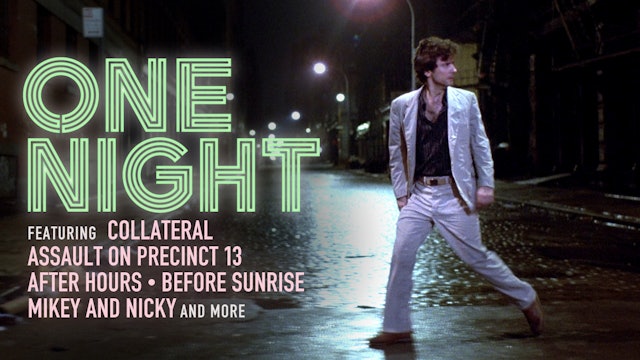Night and the Cities

“Well, the night does funny things inside a man.”
Tom Waits
Movies that unfold in large part over a single night are, obviously, experiments in time. They present an accordion-squeeze of a challenge to our perception of a story’s reality: they must condense maybe twelve hours into around two, while also expanding this short stretch so it can supply all the drama that a more forgiving structure can borrow from a lifetime, ten lifetimes, a millennium or three. And since the markers of narrative progress must be physically close enough that a protagonist can hit them all between dusk and dawn, these experiments in time—hat-tip, Einstein—invariably become experiments in place.
Some filmmakers respond to these challenges by narrowing the settings down to one or two carefully controlled interiors, in which the dialogue and performances provide the pyrotechnics. This approach is key to the theatrical register employed by Louis Malle in My Dinner with André (1981) and Mike Nichols in Who’s Afraid of Virginia Woolf? (1966). Or, when working in horror or horror-adjacent genres, a director might use an enclosed space as a temporary fortress in a siege situation, where an external threat bears increasingly down on the internal, interpersonal dynamic. The house in George A. Romero’s Night of the Living Dead (1968), the abandoned police station in John Carpenter’s Assault on Precinct 13 (1976), and even the Parisian mall in Bertrand Bonello’s Nocturama (2016)—of which Assault and Romero’s zombie sequel Dawn of the Dead are forebears—all function in this way.
But other filmmakers turn that inward gaze outward. They let their characters loose on city streets, the better to watch them bump into themselves in the dark. In these films, a long night of the soul is shaped by urban psychogeography, with the well-mapped thoroughfares of the city and the well-established thought patterns of the mind made equivalently strange and mysterious in the drowsy nighttime. As a waiter (Dick Miller) in Martin Scorsese’s After Hours (1985) rasps to Paul (Griffin Dunne) during the graveyard shift in an Edward Hopper diner: “Different rules apply when it gets this late.”










